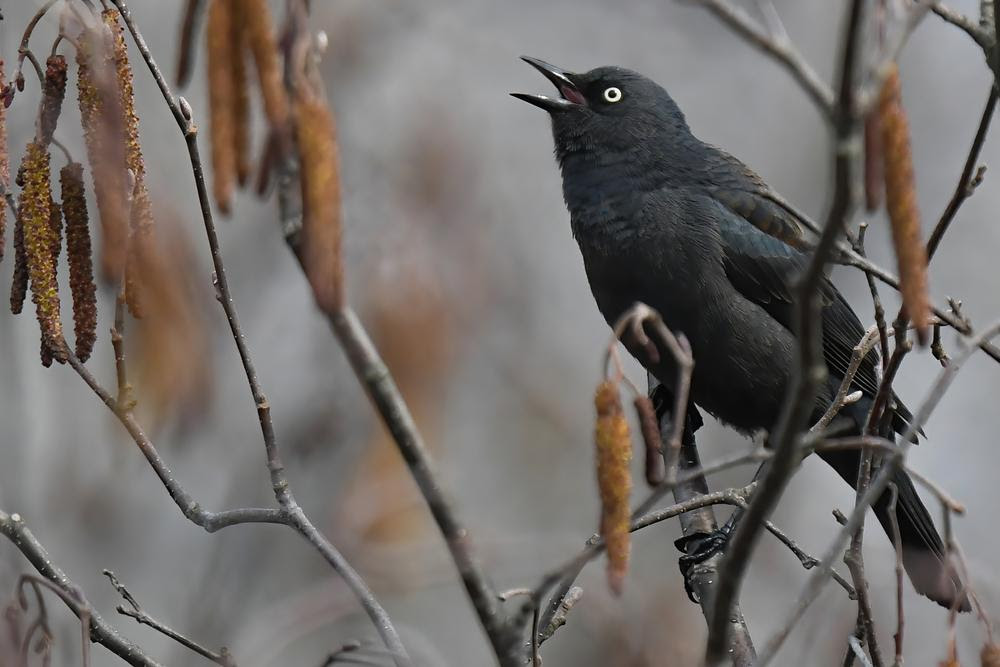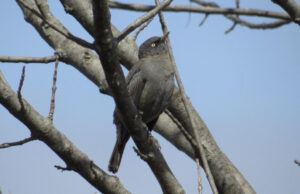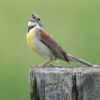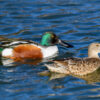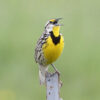Rusty Blackbird, Euphagus carolinus
Bill Rowe
Unlike our other blackbirds, the intriguing, mysterious Rusty nests far to our north, in the boreal forest of Alaska, Canada, and northernmost New England. In fall it comes down to spend the winter in the eastern U.S., especially the southeast, specializing in wet forested areas and adjacent farmlands—but see “St. Louis Status” for other possible places to find it. The “mystery” is the drastic decline in this species over the past 50 years, possibly 80-90%, with much speculation about possible causes, on both the remote breeding grounds and the nearby wintering grounds. These might include loss of forested habitat, killing of the birds when they join with huge flocks of other blackbirds that can damage crops, contaminants like mercury up north, and other as-yet-unidentified problems. This makes it a species of concern, monitored when possible using (for instance) the numbers tallied on Christmas Bird Counts over the years.
IDENTIFICATION: Rusty Blackbirds are the size of a redwing (a little smaller than a robin) with sharp-pointed, slightly decurved bills. Their plumage is extremely variable, from strongly patterned with rust, gray, and black in fall to solid, somewhat glossy black (male) or gray (female) in spring, always with a staring pale eye. See the photos for some of the ways they can appear. Their close cousin, Brewer’s Blackbird, may be found here in early spring and late fall, usually in wide-open farm fields, sod farms, etc. Separating them from Rusties can be tricky; consult your field guide.
ST. LOUIS STATUS: Rusties occur in flocks like other blackbirds, but whereas those others are often seen in four- or five-figure congregations, Rusty flocks in our area are generally limited to dozens, or at most a few hundred. These groups, however, may show up anywhere—not just out in the countryside but also in your nearest vest-pocket park or your own yard—and they may settle in for weeks or months and even appear on the ground below your feeders, picking up waste seed. Up in the trees, you may hear their calls, a kind of babbling mixed with high-pitched whistles. Chances increase during February and March, as additional Rusties begin migrating north through our area; they are gone by late April and show up again in October. One good opportunity to record them could be the Great Backyard Bird Count, for which see below.
Learn more and listen to the calls and songs of Rusty Blackbirds here.
Fall male below; Photo Credit- Bill Rowe
Fall female below
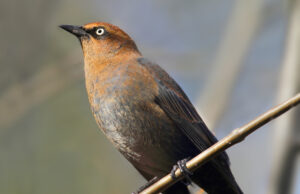
Spring female below; Photo Credit- Bill Rowe

